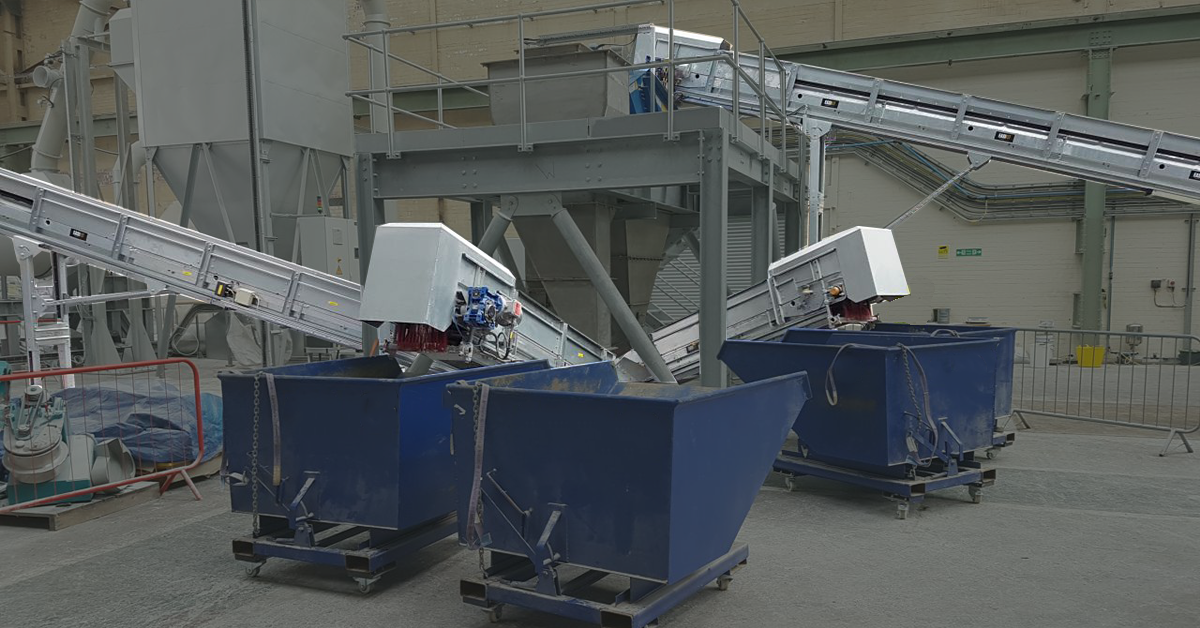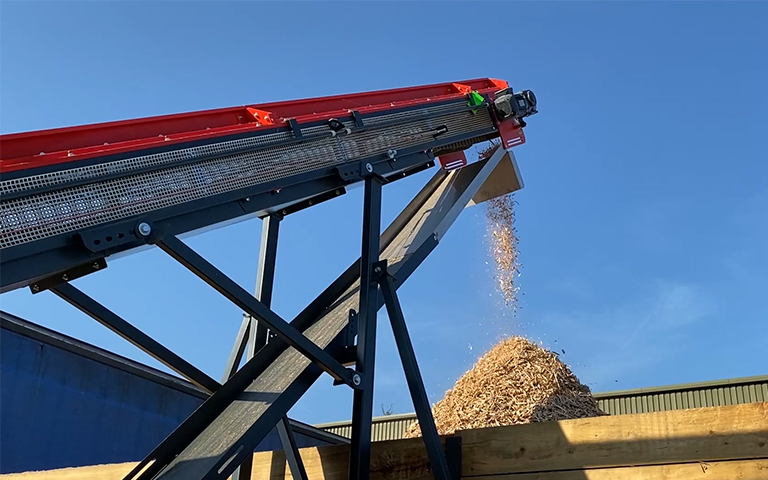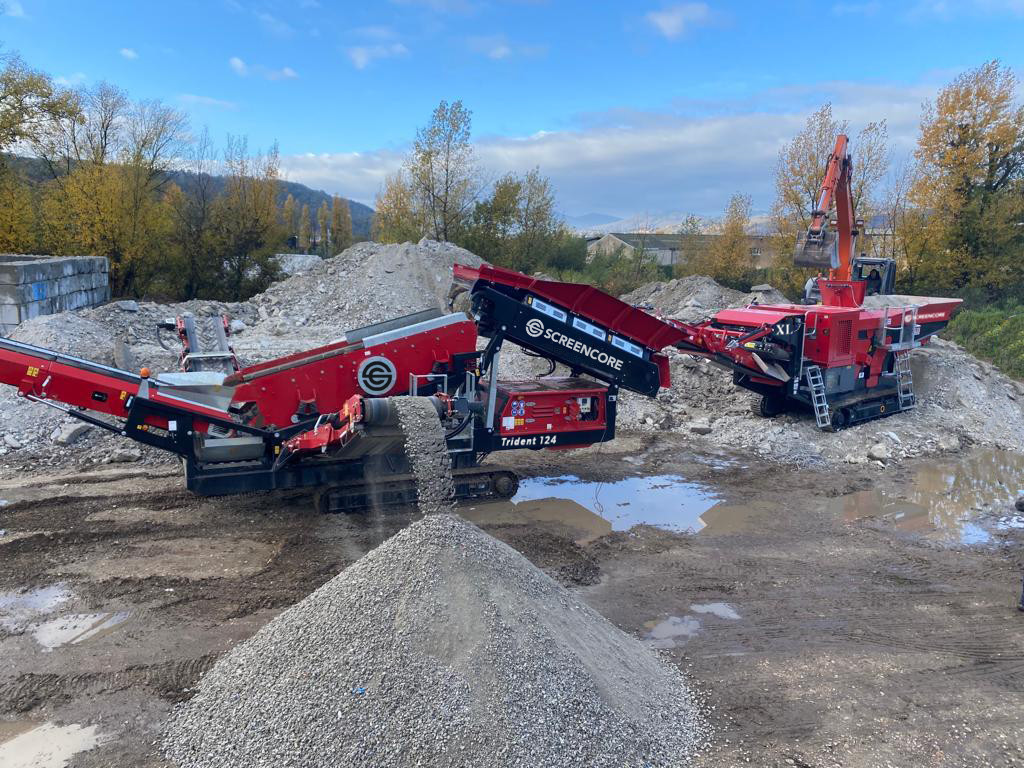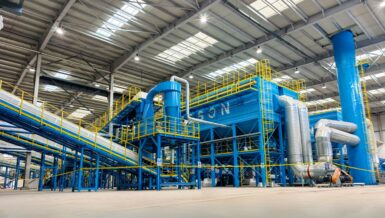Pre-preparation
Most waste streams will require some sort of pre-preparation before it is actually loaded into the incinerator. It is important that pre-preparation is taken seriously as this can impact the quality in which your incinerator works and how much it costs you to use the incinerator in the long term.
Incineration Process
Below we have listed 10 useful steps on how to work an incinerator, including some pre-preparation steps to take, in order to get the best burn from your incinerator.
- Step 1: Sort
- Step 2: Shred
- Step 3: Dry
- Step 4: Determine batch size
- Step 5: Pre-heat
- Step 6: Load your incinerator
- Step 7: Let it cool
- Step 8: De-ashing
- Step 9: Spot check
- Step 10: Re-load
Step 1: Sort
The first step of preparing your waste for incineration should be to sort through the waste. Pick out any high-value recyclable items for resale. This could be large pieces of glass or metal that can be re-used elsewhere.
Whilst looking for items of value, it is also important that you search for any dangerous items and remove them from the waste. An example of a dangerous material would be batteries. If a battery is left in the waste and placed into the incinerator, it could potentially explode causing damage to your machine and staff. The battery would also release harmful fumes into the atmosphere when burnt which can cause a serious risk to the environment and human health.
Step 2: Shred
Shredding the waste before incineration is an important part of preparation. Shredding is a technique used in the disposal process of paper waste, agricultural waste, household waste, and industrial waste.
Shredding the material is essentially breaking the material down into smaller pieces. Reducing the size of the waste allows you to burn more waste in one batch which can save money on the running costs of an incinerator.
Step 3: Dry
An additional step when preparing your waste for incineration is drying. The drying process involves reducing the moisture content of the waste load to as low as possible. We would recommend 30% moisture content for the best efficiency.
If a batch of waste has high moisture content it will take a longer amount of time to completely burn the waste as the heat will be used to evaporate the moisture first. Reducing the moisture content allows for a quicker burn time improving efficiency. Most MSW (Municipal Solid Waste) will need to be dried depending on how and where it has been stored.
Step 4: Determine batch size
It is important that you determine a batch size suitable for your incinerator. Work out the optimum batch size that you can burn for the lowest cost. Having a method like this in place can help you to save money on the running costs for your incinerator.
You must not overfill your incinerator as this can cause the slow-burning of the waste. It can also cause damage to your incinerator if you continue to overfill it. Whilst it is important not to overfill your incinerator it is also just as important not to have batches of waste that are too small.
We recommend saving your small batches of waste so they can be added into the incinerator with other waste. Operating your incinerator with a small amount of waste is a huge waste of energy and fuel. Using this method long-term would cost a large amount of money.
Step 5: Pre-heat your incinerator
Before loading your waste into the incinerator you must first pre-heat it. You must preheat your incinerator to a temperature of 850⁰C.
Putting waste into an incinerator with a cooler temperature can cause a mix of harmful particles to form from the waste. These particles can cause serious harm to humans and the environment, so it is essential that you make sure your incinerator has been preheated to 850⁰C before loading in any of your waste. The reason that 850⁰C is given as temperature is that it is hot enough to kill any of these harmful air pollutants before they are released.
Step 6: Load your incinerator
Once you have completed all of your pre-preparation steps and your incinerator reaches 850⁰C, it is time to load your waste into the incinerator! Load your waste carefully into the incinerator ensuring you take all safety precautions. Make sure you’re wearing all necessary safety equipment to avoid the risk of being harmed in the loading process.
Temperatures in our incinerators can reach up to 1100⁰C, so it is important that you follow all guidelines and safety regulations when you’re operating an incinerator.
Step 7: Let it cool
Once the combustion process is complete, it is important that you let the incinerator cool down as well as the ash. Temperatures inside of the incinerator are extremely hot so it is likely that the outside of the incinerator will be extremely hot too.
It is important that the ash is also cool when it comes to de-ashing. Removing the ash when it is still hot can cause the ash to ignite and start a fire. To adhere to health and safety regulations, make sure that both the incinerator and ash are cool before handling.
Step 8: De-ashing
Once your incinerator and ash have cooled to a reasonable temperature, you can easily de-ash the system ready for the next batch. Some of our incinerator models also have an auto de-ashing system which minimizes the contact the operator has with the incinerator. This removes the risk of any burns from high temperatures or irritation from fly ash.
Step 9: Spot Check
Once your incinerator has been de-ashed and is completely cool, you should run a spot check on your incinerator. Places that you should check are burners, chamber, and fuel lines. By making sure everything is in working order, you can ensure good quality burns and help to prevent any problems in the future. This will save you time and money by preventing any issues from progressing.
Step 10: Re-load
After you have spot-checked your incinerator to ensure everything is in working order, you are ready to repeat the steps all over again to re-load your next batch of waste!
Maintaining Operator Safety
Protecting your safety should be a number one priority when operating an incinerator. PPE kits can save lives and prevent serious injury. Your requirements may vary depending on what environment you’re working in and the waste you handle, but there are essential pieces of PPE that every waste handler and incinerator operator should wear. These are:

- Safety visor or face mask – this will help to protect the eyes and mouth.
- Heavy duty/ heat resistant gloves – to protect the hands from any sharp objects and extreme temperatures.
- Apron or overalls – this will prevent any damage to clothing from spills and parts of the waste.
- Heavy duty boots – to protect your feet from heavy waste and any sharp objects that may become separated when handling the waste
Why should you wear PPE?
Personal Protective Equipment can prevent injury and other forms of harm to workers. When handling and incinerating hazardous waste, workers need to be protected from disease and germs, which can easily be inhaled or spread through direct contact. Covering the mouth by using face masks and wearing fully body protective clothing can help to prevent this.

Medical waste can also contain sharp objects, body fluids and chemicals. Heavy duty gloves and full body aprons can be used to prevent cross contamination, scratches and punctures from sharps. Sorting the waste before incineration allows less handling time by the operators, preventing risk of disease, infection and injury. This can be done by using the color coding system for medical waste.
Although most modern incinerator machines feature numerous built in safety measures, workers are still required to manually load waste and operate the incinerator itself. The extreme high temperatures pose a huge threat to anyone involved, so PPE kits are essential for operators.
Flame retardant clothing including overalls, gloves, arm guards and jackets are essential pieces of PPE. This equipment will protect against the intense temperatures of the incinerator. A full safety visor is also required to protect the face from the heat and any potential sparks and simmering ash.

























